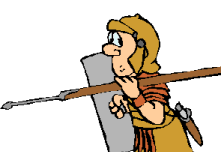
Let's go!


Describing an event in the past: For this we usually use the simple past tense plus an implied or explicit 'time indicator'. ('Implied' means you can understand it even if it is not actually said, and 'explicit' is when it is said clearly.)
For example:
Mike went to the cinema last night.
This is an explicit time indicator because 'last night' tells us exactly when this happened.
Mike enjoyed the sunset.
This is an implicit time indicator because we know the time was late afternoon, even though the sentence does not say this. Usually a past tense used this way describes the most recent time in the past this was possible. If another time is meant, you have to use an explicit time indicator.
Mike enjoyed the sunset two days ago.
The rule with the simple past is that you should use an explicit time indicator if the time of the event is not known. But if it is clear what time is meant, use the simple past without a time indicator. The simple past can describe events from the distant past -e.g. The Earth was formed four billion years ago - or very recently - e.g. I enjoyed that chocolate. Shall we have another?
Describing two events in the past that happened at the same time: Sometimes two events happen at once, or one event interrupts another.
For example:
Mike was crossing the street when he saw Sally.
or
Bill was sleeping when the phone woke him up.
Here we can see that Mike continued crossing the street after he had seen Sally, but Bill stopped sleeping when his phone rang.
To describe these two events that happened together, we use the past simple for one verb and the past continuousfor the other. (See how to form these types of tense on the previous page.)
When we describe two actions in the past in this way, we use the the present continuous for the longer action (e.g. crossing the street took Mike forty seconds, but seeing Sally happened immediately, so we use the present continuous for 'cross'.) We also put the action that was interrupted into the continuous - so Bill 'was sleeping' until the phone call woke him up.
Note that the two parts of the sentence can come in any order:
Mike was crossing the street when he saw Sally.
or
When he saw Sally, Mike was crossing the street.
Because the grammar explains the how events happened, we do not need to rely on word order to explain them.
Describing which of two events in the past happened first: Sometimes it is clear which of two events in the past happened first, so we use the simple past to describe both.
For example:
Mike sat down and watched the movie.
We usually sit to watch a movie, so we know which action happened first. Sometimes, however, this is not clear. Imagine Mary visits her sister Janet. Janet cooks dinner. Did Janet cook the dinner before or after Mary arrived?
Using the past perfect lets us know which event happened first.
Janet had cooked dinner when Mary arrived.
Because the event in the past perfect happens before the event in the simple past, we can see that Janet cooked beforehand
Janet cooked dinner when Mary had arrived.
Here we see that Mary arrived and then Janet cooked dinner.
In the Elementary description of the past tense, we saw that regular '-ed' endings are pronounced 'id', 't' or 'ed'. Irregular verbs have their own pronunciation which has to be learned - for example 'read' with a hard 'a' is an infinitive, with a short 'a' (so it sounds like 'red') the word is a past simple or past participle. Remember also that just because you know how one verb is pronounced, it does not mean another with the same form has the same pronunciation, even with regular verbs - for example check the pronunciation of 'rounded' and 'wounded'.
In the exercises which follow, you can practice irregular verbs and other parts of the past tense which you have studied here. Click either the menu on the right or the blue triangle to go on.
If this explanation is too simple for you, look at the grammar of the past tense in the advanced section. On the other hand, you should read the grammar in the elementary section if this seems too difficult.